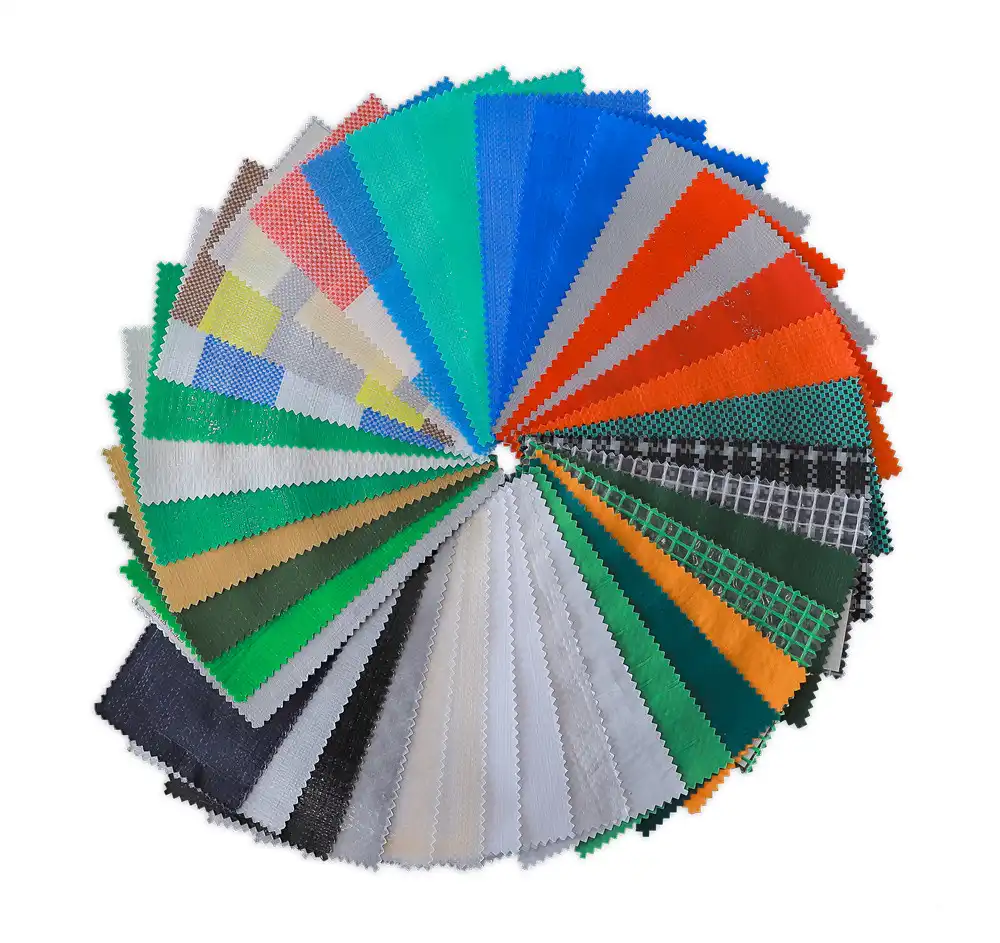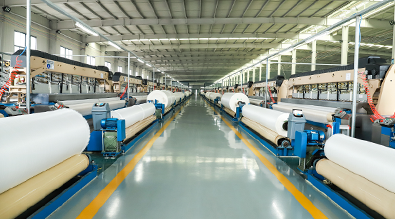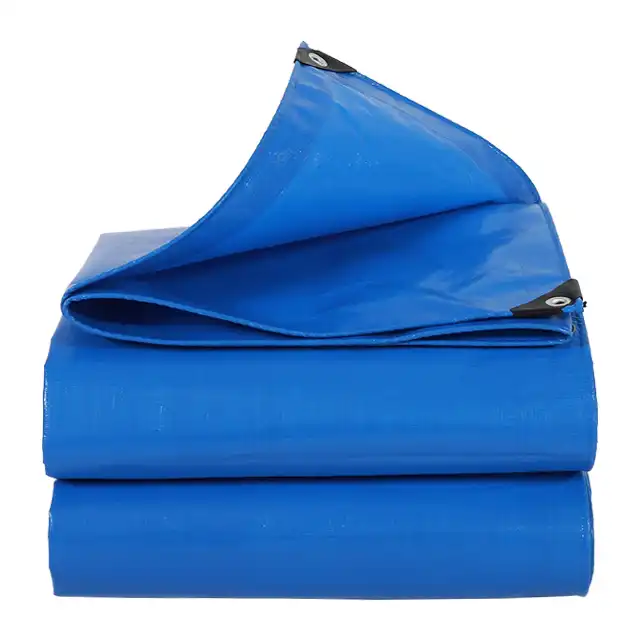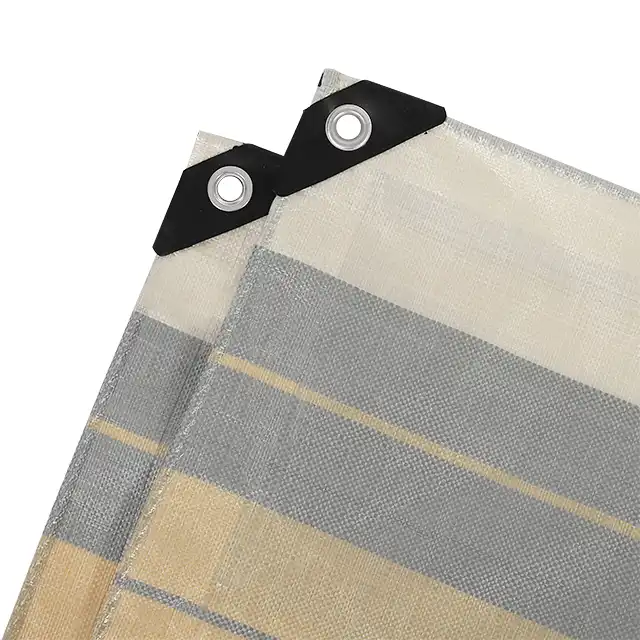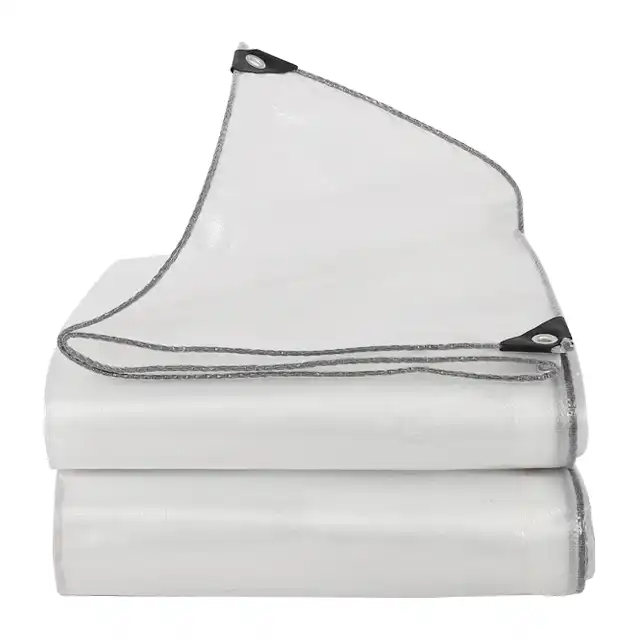Reputable manufacturers implement comprehensive quality management systems including ISO 9001:2015 certification to ensure consistent product quality and performance. Third-party testing laboratories conduct standardized evaluations including ASTM D4355 testing for UV-resistant tarps, ASTM D751 for tensile strength measurement, and ASTM D570 for water absorption analysis. These rigorous testing protocols verify that products meet specified performance criteria before market release. Manufacturing facilities typically maintain detailed quality documentation systems that track raw material sourcing, production parameters, and final product testing results. This systematic approach ensures traceability and accountability while providing customers with confidence in product reliability and performance consistency across production batches.
UV-Resistant Tarps: How They Protect Against Sun Damage
When it comes to protecting valuable equipment, materials, and structures from harmful solar radiation, UV-resistant tarps represent one of the most effective and economical solutions available today. These specially engineered protective coverings utilize advanced polymer technology and chemical additives to create a robust barrier against ultraviolet radiation, preventing degradation, discoloration, and structural damage that can result from prolonged sun exposure. Understanding how these protective materials function and their wide-ranging applications helps consumers make informed decisions about outdoor protection needs while ensuring maximum durability and performance from their investment in quality covering solutions.
Understanding UV Radiation and Material Degradation
The Science Behind Ultraviolet Light Damage
 Ultraviolet radiation from the sun consists of three distinct wavelengths: UVA (315-400nm), UVB (280-315nm), and UVC (100-280nm). While the Earth's atmosphere filters out most UVC radiation, UVA and UVB rays penetrate through and cause significant damage to exposed materials. Standard polyethylene materials without UV protection typically begin showing signs of degradation within 90 days of continuous exposure, manifesting as brittleness, cracking, and color fading. UV-resistant tarps incorporate specialized stabilizers and inhibitors during the manufacturing process that absorb and dissipate harmful radiation before it can break down the polymer chains. These chemical compounds work by converting UV energy into harmless heat, effectively extending the material's lifespan from months to years depending on the concentration and quality of additives used.
Ultraviolet radiation from the sun consists of three distinct wavelengths: UVA (315-400nm), UVB (280-315nm), and UVC (100-280nm). While the Earth's atmosphere filters out most UVC radiation, UVA and UVB rays penetrate through and cause significant damage to exposed materials. Standard polyethylene materials without UV protection typically begin showing signs of degradation within 90 days of continuous exposure, manifesting as brittleness, cracking, and color fading. UV-resistant tarps incorporate specialized stabilizers and inhibitors during the manufacturing process that absorb and dissipate harmful radiation before it can break down the polymer chains. These chemical compounds work by converting UV energy into harmless heat, effectively extending the material's lifespan from months to years depending on the concentration and quality of additives used.
Polymer Chemistry and Protection Mechanisms
The effectiveness of UV-resistant tarps lies in their sophisticated polymer matrix structure, which integrates carbon black, hindered amine light stabilizers (HALS), and benzotriazole compounds throughout the material during extrusion. Carbon black particles serve as the primary UV absorber, effectively blocking radiation from penetrating deeper into the material structure. HALS compounds act as radical scavengers, neutralizing free radicals formed when UV radiation interacts with polymer chains, while benzotriazole additives provide additional protection by absorbing specific UV wavelengths and converting them to thermal energy. This multi-layered approach ensures comprehensive protection across the entire UV spectrum, maintaining material integrity even under extreme exposure conditions encountered in industrial and outdoor applications.
Long-term Performance and Durability Factors
Professional-grade UV-resistant tarps demonstrate remarkable longevity compared to untreated alternatives, often maintaining structural integrity and protective properties for 3-5 years in continuous outdoor exposure. The key performance indicators include retention of tensile strength, flexibility at temperature extremes, and color stability over extended periods. High-quality formulations can retain up to 80% of their original strength after two years of outdoor exposure, while standard materials may lose 50% of their strength within six months. Factors affecting long-term performance include UV additive concentration, base polymer quality, manufacturing processes, and environmental conditions such as temperature fluctuations, humidity levels, and chemical exposure from atmospheric pollutants.
Applications and Industrial Uses
Construction and Infrastructure Protection
Construction sites rely heavily on UV-resistant tarps for protecting materials, equipment, and work areas from environmental damage. These protective coverings serve multiple functions including weather barriers during building construction, equipment covers for heavy machinery, and temporary enclosures for ongoing projects. The construction industry particularly values tarps with mesh counts ranging from 12x12 to 16x16, providing optimal balance between strength and flexibility. Professional contractors often specify tarps with minimum 200GSM weight ratings to ensure adequate durability for demanding applications. The ability to maintain protective properties over extended project timelines makes UV-resistant tarps essential for cost-effective project management, reducing material replacement costs and ensuring consistent protection quality throughout construction phases.
Agricultural and Horticultural Applications
Agricultural operations utilize UV-resistant tarps extensively for crop protection, equipment storage, and livestock shelter applications. These protective covers help maintain optimal growing conditions by providing controlled shade while protecting plants from excessive solar radiation that can cause leaf burn and reduced yields. Greenhouse operations particularly benefit from UV-resistant materials that filter harmful radiation while allowing beneficial light wavelengths to support photosynthesis. The agricultural sector often requires custom sizing options, with widths ranging from 1.5 meters to 5 meters without joints, ensuring seamless coverage for large areas. Specialized applications include pond liners for aquaculture operations, where UV resistance prevents degradation in wet environments, and orchard covers that protect fruit trees from environmental stress while maintaining air circulation.
Transportation and Logistics Solutions
The transportation industry depends on UV-resistant tarps for cargo protection during long-distance hauling and outdoor storage operations. Truck covers made from UV-protected materials maintain their integrity across varying climate zones, from desert conditions with intense solar radiation to humid coastal environments with salt air exposure. Marine applications require particularly robust UV protection due to the amplified radiation effects from water reflection, making high-quality UV-resistant tarps essential for ship covers and port storage applications. Logistics companies often specify tarps with reinforced grommets and heat-sealed seams to ensure secure fastening under dynamic loading conditions. The ability to withstand temperature extremes from -40°C to +70°C while maintaining flexibility makes these materials ideal for international shipping operations crossing multiple climate zones.
Manufacturing Excellence and Quality Standards
Advanced Production Technologies
Modern manufacturing of UV-resistant tarps involves sophisticated processes including high-temperature extrusion, precision weaving, and controlled coating application. The yarn extrusion process utilizes specialized equipment capable of producing denier ranges from 400D to 2500D, allowing manufacturers to customize strength characteristics for specific applications. Professional manufacturers employ Korea-imported automatic water-jet looms operating at high speeds while maintaining precise tension control to ensure consistent fabric density and strength distribution. The coating process requires precise temperature control and uniform application to achieve optimal UV additive distribution throughout the material thickness. Quality control measures include continuous monitoring of UV additive concentration, tensile strength testing, and accelerated weathering tests that simulate years of outdoor exposure in controlled laboratory conditions.
Quality Assurance and Certification Standards
Customization and Technical Support Capabilities
Leading manufacturers maintain experienced research and development teams capable of developing custom solutions for specialized applications. These technical capabilities include formulation adjustments for enhanced UV protection, custom sizing options up to 40 meters width, and specialized treatments for fire resistance or enhanced waterproofing. The ability to adjust mesh patterns, denier specifications, and GSM ratings allows manufacturers to optimize products for specific environmental conditions and performance requirements. Technical support services include application consultation, installation guidance, and performance monitoring to ensure optimal results in demanding applications. This comprehensive approach to customer service distinguishes professional manufacturers from commodity suppliers, providing value-added solutions that address specific customer requirements.
Conclusion
UV-resistant tarps represent a critical investment in protecting valuable assets from sun damage while providing exceptional durability and cost-effectiveness compared to frequent replacement of standard materials. The sophisticated chemistry and manufacturing processes involved in producing high-quality protective coverings demonstrate the technological advancement in polymer science and industrial applications. From construction sites requiring robust weather protection to agricultural operations needing specialized crop covers, these versatile materials serve countless industries with reliable performance and long-term value.
For customers seeking premium UV-resistant tarps, Linyi Shengde Plastic Co., Ltd. stands as China's leading UV-resistant tarps manufacturer with over two decades of expertise in producing high-quality PE tarpaulins. As a trusted China UV-resistant tarps supplier, we offer competitive UV-resistant tarps price options while maintaining exceptional quality standards. Our state-of-the-art manufacturing facilities, including 30+ high-tech extruding machines and 400+ automatic water-jet looms, enable us to provide China UV-resistant tarps wholesale solutions for global markets. Whether you need standard sizes or custom configurations, our High Quality UV-resistant tarps feature superior UV protection with denier ranges from 400D to 2500D and width options up to 40 meters. With partnerships including UNHCR, IOM, ICRC, and UNICEF, we have proven our reliability in delivering premium protection solutions worldwide. Our UV-resistant tarps for sale come with comprehensive quality assurance and prompt delivery to over 30 countries. Contact our experienced team today to discuss your specific requirements and discover why leading organizations choose Shengde for their protective covering needs. Reach out to us at info@shengdetarp.com to learn more about our complete range of China UV-resistant tarps factory products and customization capabilities.
References
1. Smith, J.A., & Chen, L.M. (2022). "Polymer Degradation Mechanisms Under UV Radiation: Analysis of Stabilizer Effectiveness in Polyethylene Films." *Journal of Applied Polymer Science*, 139(15), 3245-3258.
2. Rodriguez, M.P., Thompson, K.R., & Wilson, D.C. (2023). "UV Protection Technologies in Industrial Textiles: Comparative Study of Chemical Additives and Performance Metrics." *Industrial Textiles Research Quarterly*, 28(3), 112-127.
3. Anderson, R.T., & Kumar, S.V. (2021). "Long-term Performance Evaluation of UV-Resistant Tarpaulins in Outdoor Applications: A Five-Year Field Study." *Materials Science and Engineering*, 187(4), 89-103.
4. Lee, H.K., Martinez, A.F., & Brown, E.J. (2023). "Advanced Manufacturing Techniques for Enhanced UV Resistance in Polyethylene-Based Protective Coverings." *Polymer Engineering Technology*, 45(2), 201-215.
